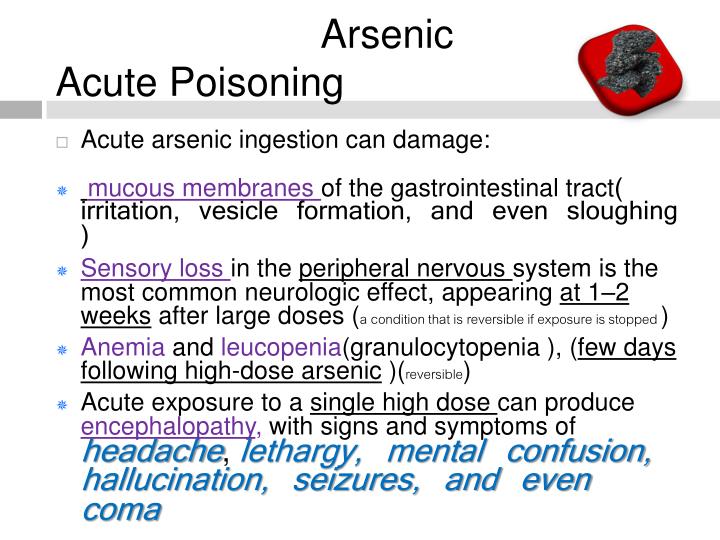

Most symptomatic patients report improvement after 2 days of treatment.

Maximum enhancement of urine lead elimination typically occurs with the first dose. Over a 5-day course, mean daily urine lead excretion exceeds baseline by between 5- and 20-fold and blood lead concentrations fall to 50% or less of the pretreatment concentration, with wide variation. There is also evidence that in more severely poisoned patients DMSA 30 mg/kg/day can be given for more than 5 days with benefit.ĭMSA 30 mg/kg/day significantly increases urine lead elimination and significantly reduces blood lead concentrations in lead-poisoned patients, though there is substantial individual variation in response. Studies suggest, however, that repeated courses of DMSA 30 mg/kg/day for at least 5 days are equally efficacious if a treatment-free period of at least 1 week between courses is included to allow redistribution of lead from bone to soft tissues and blood. Subsequently, a 19- to 26-day regimen was introduced with the intent of preventing or at least blunting a rebound in the blood lead concentration. DURATION OF THERAPY: Initial clinical studies with DMSA involved the administration of a 5-day course of treatment. DOSE: DMSA 30 mg/kg/day is more effective than either 10 or 20 mg/kg/day in enhancing urine lead excretion. If this is the case, this suggests that chelation occurs principally, if not exclusively, in the kidney. It is not known whether protein-bound DMSA can chelate lead there is evidence that the mixed disulfides of cysteine are the active chelating moiety in humans. Some 10-25% of an orally administered dose of DMSA is excreted in urine, the majority within 24 h and most (>90%) as DMSA-cysteine disulfide conjugates. DMSA therefore accumulates in the kidney where it is extensively metabolized in humans to mixed disulfides of cysteine. Nonfiltered protein-bound DMSA in peritubular capillaries is also available for uptake into proximal tubule cells by active anion transport at the basolateral membrane.

Most DMSA in plasma is protein (mainly albumin)-bound through a disulfide bond with cysteine only a very small amount is present as free drug, which is filtered at the glomerulus then extensively reabsorbed into proximal tubule cells. There is evidence that enterohepatic circulation occurs. PHARMACOKINETICS AND PHARMACODYNAMICS: DMSA is absorbed rapidly but incompletely after oral administration, probably through an active transporter. Medline, Toxline, and Embase were searched and 912 papers were identified and considered.

This article reviews data on the efficacy of succimer (dimercaptosuccinic acid, DMSA) in the treatment of human inorganic lead poisoning, the adverse effects associated with its use, and summarizes current understanding of the pharmacokinetic and pharmacodynamic aspects.


 0 kommentar(er)
0 kommentar(er)
